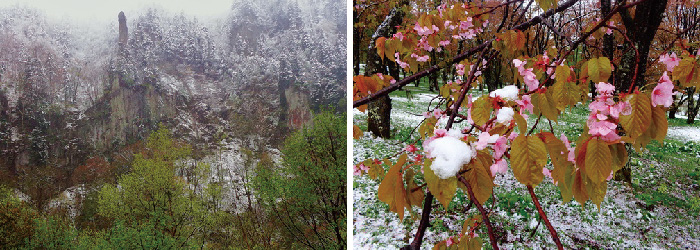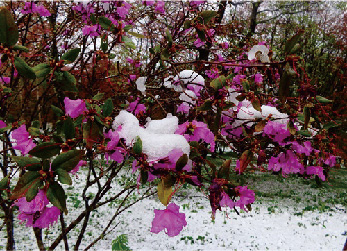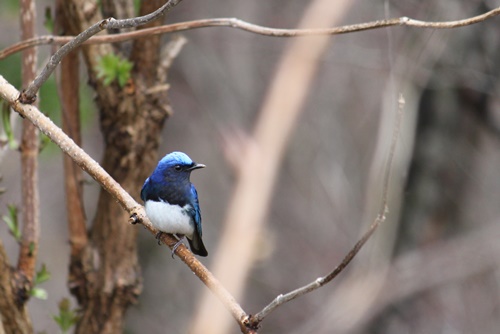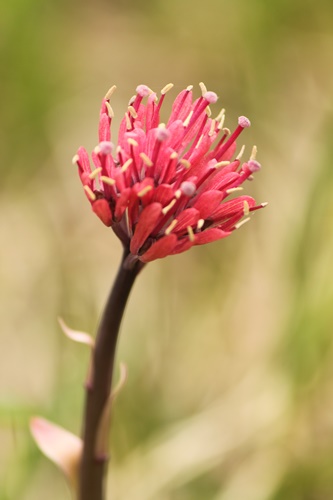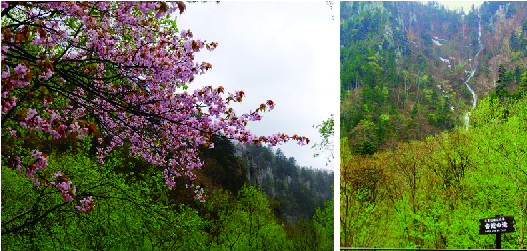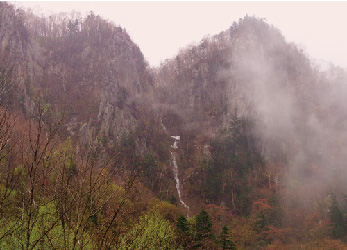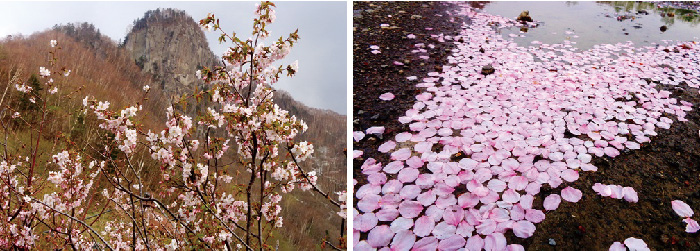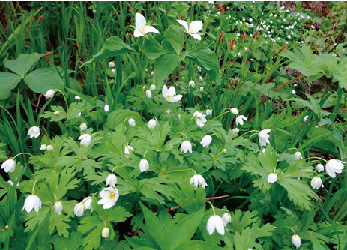Beginning last night and continuing into today, snow has been falling throughout the Sounkyo Gorge and creating a wintry landscape.
The Cerasus sargentii and Rhododendron dauricum that had been blooming so beautifully are now completely covered with snow.
The gorge is also full of snow.
And the weather forecast predicts snow for today as well.
Since yesterday, all of the passes, the national route, and other roads have been closed to traffic.
Detailed road information is provided on the Visitor Center’s website. Please take a look at it before making any trips.
In addition, the Aizankei Kamikawa route (Prefectural Route 223) was open on the 15th but is closed today due to snow.
The effects of the snow will likely last more several days.
For the time being, roads in the area are closed to cars on summer tires.
Photos: Near Shichiken Peak, Sounkyo (left); snow-covered cherry blossoms and azaleas (center and right) May 17
The Cerasus sargentii and Rhododendron dauricum that had been blooming so beautifully are now completely covered with snow.
The gorge is also full of snow.
And the weather forecast predicts snow for today as well.
Since yesterday, all of the passes, the national route, and other roads have been closed to traffic.
Detailed road information is provided on the Visitor Center’s website. Please take a look at it before making any trips.
In addition, the Aizankei Kamikawa route (Prefectural Route 223) was open on the 15th but is closed today due to snow.
The effects of the snow will likely last more several days.
For the time being, roads in the area are closed to cars on summer tires.
Photos: Near Shichiken Peak, Sounkyo (left); snow-covered cherry blossoms and azaleas (center and right) May 17
